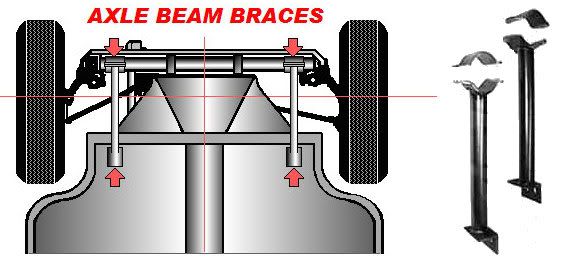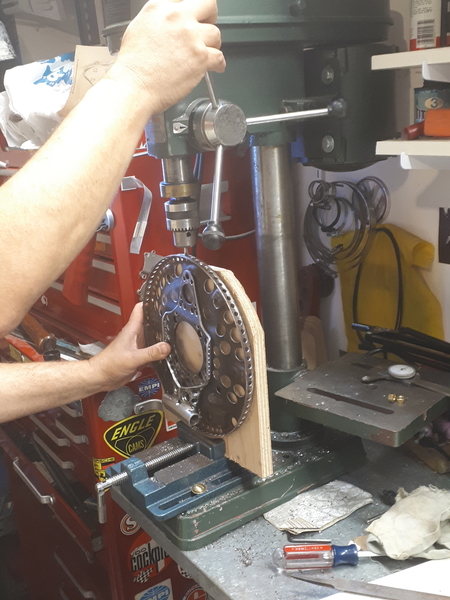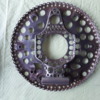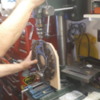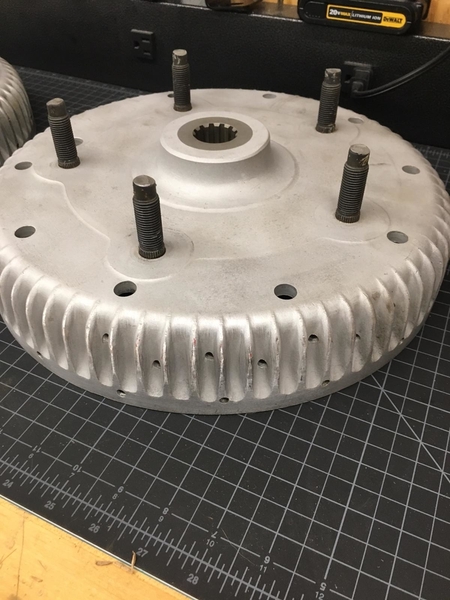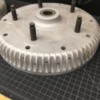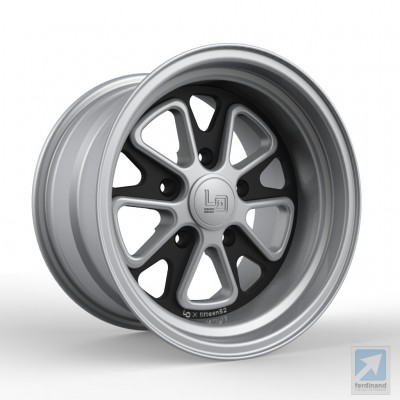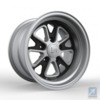From a 2016 post:
A bunch of us weighed our cars at Carlisle one year. If you search on carlisle car weights or corner weights you'll get some hits to follow.
My CMC was heavier than most at almost 2,000 pounds, full tank, "Space-saver" spare tire, bunch of spare parts and tools, no driver, full tank, beer cooler on the back seat and maybe 20 pounds of soundproofing all over the place. I believe that CMCs are heavier, in general, because los Amigos who manned the chopper gun at CMC when the bodies were being made worked slowly, making the fiberglass thicker than other cars. For example, the glass above the dash where the center windshield strut goes through is over 3/8" thick on my car and the tops of the front fenders where the mirrors mount are 3/8" (left) and 7/16" (right). That's thick!
IIRC, the CMC's tended to be heavier than VS and Beck by 40-50 pounds and most of the CMCs were around 1,850 or so and up, so I guess you're in the ballpark.
So now about your questions:
A "Beam Brace" is a piece of pipe with one ended bolted to the front beam and the other end bolted to the forward corners of the pan where cockpit ends (just before your feet). It is intended to impede any lateral movement of the beam during very hard cornering and/or bump negotiation. If you have a pan made after 1965 or so the need decreases because VW changed the beam head mount then to make it stiffer. If you are considering racing your car on the track, I might recommend a pair of beam braces, otherwise you might not ever notice a need for them. John Steele recommended them heavily right after we all had a discussion about them on here so that's why some of his car builds had them - the customers requested them after they saw them on here. Here's one I like because it can be duplicated by a competent shop for about $50 per side, welding and shaping included - Please note that CSP shows them "out of stock" but, again, they're easy to make.
http://www2.cip1.com/ProductDe...1%2D498%2D001%2D111A
There are others, just google "VW Beam Brace" for hits. Do many of us have them? I dunno - I think there is a handful of cars on here with them - that's about it.
I probably should note that Porsche did not install Camber Compensators (or Beam Braces) at the factory. The factory did not feel them necessary for road cars - they were all installed by customers or their dealerships, just like outside mirrors. IIRC, the designer of the most successful camber compensator was a guy on the West Coast who was an avid racer, figured out what was happening back there and found a cheap way to overcome the weakness. Most people buying original 356's did not then, nor have they now installed camber compensators, simply because they were "gentlemen racers", meaning that they drove their 356 to the track to watch other people race other cars on the track. Besides, the original cars had 1/2 the horsepower of our cars or less, no disk brakes until 1960 and they couldn't be driven as hard. The way most of us drive on here, anyone with a swing-arm suspension needs a camber compensator to avoid wheel tuck-under and a potential roll-over on extreme hard cornering.
So apart from the camber compensator, the only thing you really needed to do was get a good alignment and add caster shims - something that all of us have done. The rest of the stuff, like front anti-sway bars, shocks, re-setting ride height, etc., a lot of us have done (myself included) either because we felt a need (like you did) or we read about something on here and thought "Hey! I need to do that, too!"
So, along with Jack, I have front and rear anti-sway bars (my car is an IRS), a Kafer Brace, front disks, Koni shocks (a mixed blessing - nice handling but harsher ride), wider wheels/bigger tires, MUCH better seats and an Eberspaecher gas heater (since with my 2,110 I have no heater boxes). The interior now looks more like a Cabriolet than a Speedster but it feels good. Meh...
Lastly, many of us have bemoaned the poor quality coming out of some of the "Kit Car Shops" over the years so I won't go there. Yes, it would be relatively easy for them to complete and bug-proof the cars leaving their shops for a few bucks more, but they simply do not do so. They have a waiting list of customers for their cars so why would they? If you read about them on here and think, "That was then but this is now and I'm sure they've gotten better", well, some have, some haven't, but continued research on here should point that out. It should also point out who the good builders are so maybe you could direct your spare cash to them, instead?
Anyway, sorry for the long post, but you were looking for answers........
Post Script: Stan wrote: "If you want your speedster to handle like a sports car, you’re going to find yourself limited by the swing axle. If you just want to cruise around, you’ll probably never noticed the difference. "
That's the absolute truth. I drove a local VS this past summer, in a hilly part of the state with delightful back roads. I quickly became a sedate "cruiser" compared to how I drove my IRS car, simply because the body lean and squirriliness of the rear end on even moderately hard cornering didn't feel safe to me. Remember, this was not my car so I wasn't about to push it, but compared to my car the handling was night and day different.



